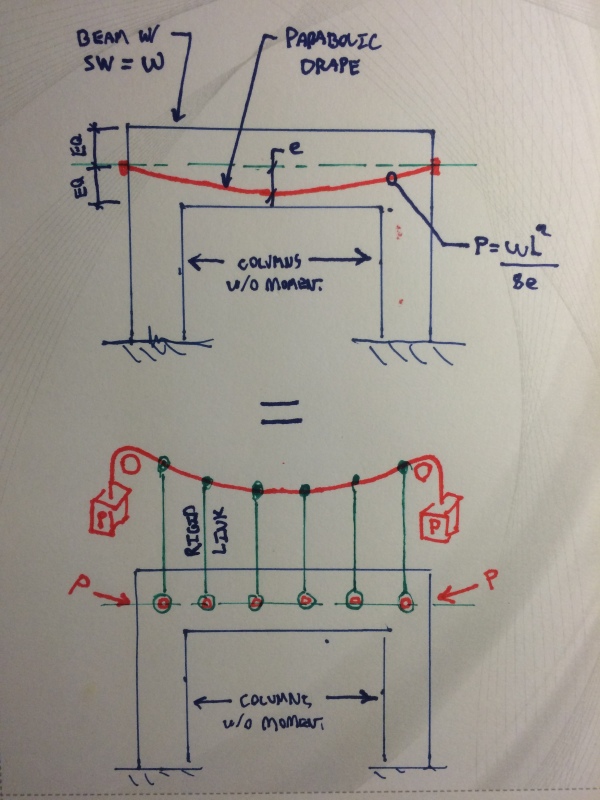sklgleb
Bioengineer
- Jan 7, 2008
- 18
Hi all,
I've been tasked with determining a nominal thickness of a post-tensioned slab - the actual slab design will be done by another firm, but we do need to know the minimum so that the architect will not have to revise elevations later. I am basing my calcs on puncture shear w/ shear from unbalanced moment factored in - we are not using any drop panels/beams/capitals - just plain two way slab on columns. However, there are just some really funky column perimeters that I am running into that I cant get around. One case is where the the slab connects to the (edge) column at one face only, and does not wrap around - I am getting a pretty significant unbalanced moment, but my Jc term, as I see it (please let me know if this is wrong) is reduced to the (1/12)bh^3, b being the column width, and h is 1/2 the depth of slab - critical distance. Naturally Jc is coming out way to small, and my shear stress from moment is on the order of several thousands. Is this a no go, or is there another way to look at this - we will be adding in shearheads later, but at this moment we are questioning the feasibility of just using concrete. In general, for those of you who have done this enough - an off-the-top-of-the-head estimate for slab depth with a typical bay of 36x28? - I got 10" right now.
Thanks,
G.S.
I've been tasked with determining a nominal thickness of a post-tensioned slab - the actual slab design will be done by another firm, but we do need to know the minimum so that the architect will not have to revise elevations later. I am basing my calcs on puncture shear w/ shear from unbalanced moment factored in - we are not using any drop panels/beams/capitals - just plain two way slab on columns. However, there are just some really funky column perimeters that I am running into that I cant get around. One case is where the the slab connects to the (edge) column at one face only, and does not wrap around - I am getting a pretty significant unbalanced moment, but my Jc term, as I see it (please let me know if this is wrong) is reduced to the (1/12)bh^3, b being the column width, and h is 1/2 the depth of slab - critical distance. Naturally Jc is coming out way to small, and my shear stress from moment is on the order of several thousands. Is this a no go, or is there another way to look at this - we will be adding in shearheads later, but at this moment we are questioning the feasibility of just using concrete. In general, for those of you who have done this enough - an off-the-top-of-the-head estimate for slab depth with a typical bay of 36x28? - I got 10" right now.
Thanks,
G.S.

